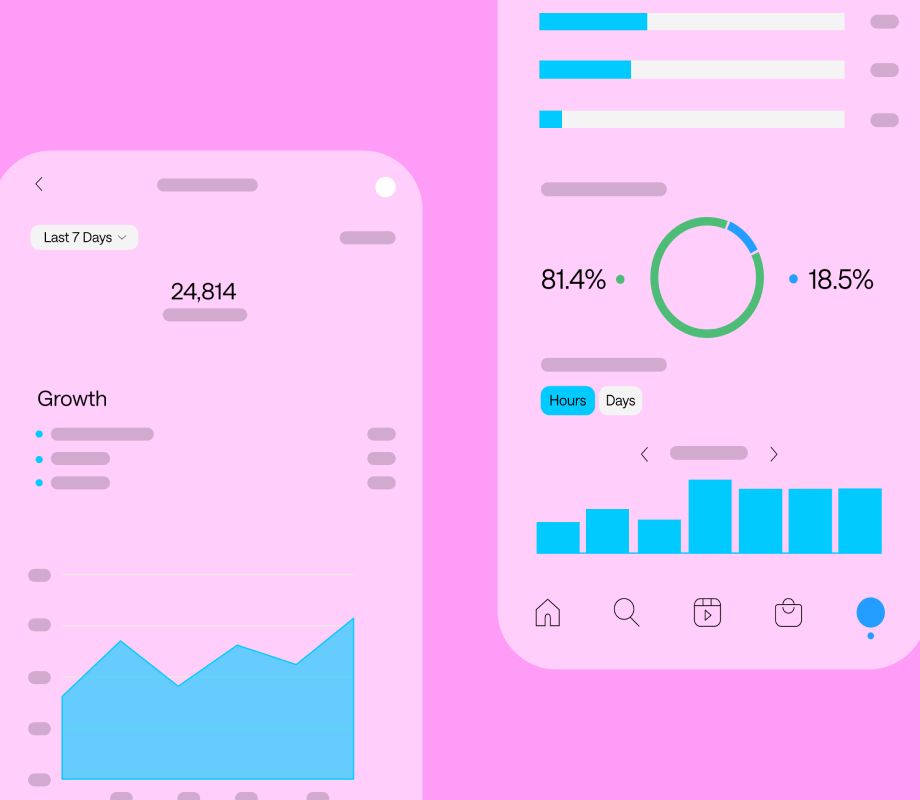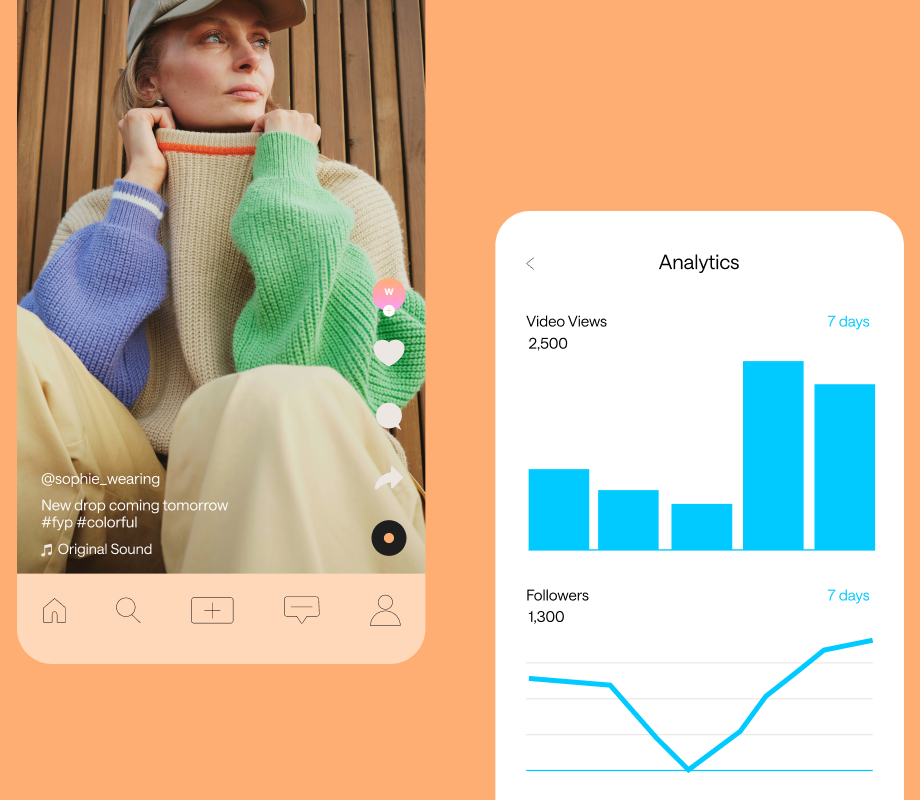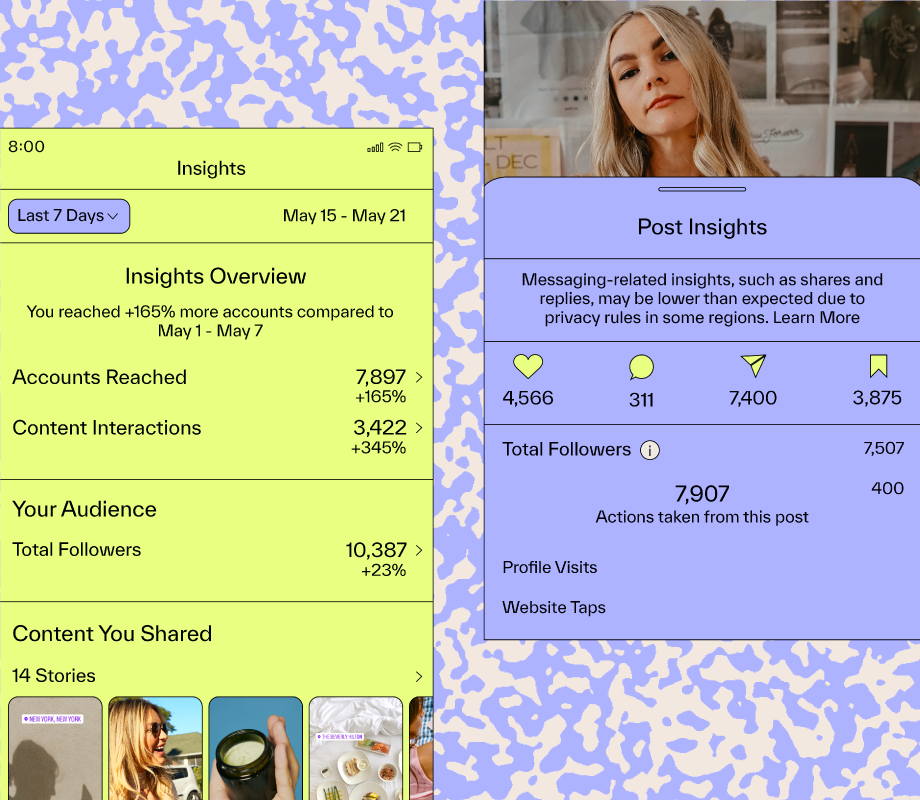Social media management doesn’t stop at content creation and scheduling. Evaluating and sharing campaign impact is essential to social success.
Enter social media analytics.
Reporting on performance and making strategic decisions based on social metrics can feel difficult – but it doesn’t have to be!
Here’s everything you need to know about social media analytics — from metrics you need to track and tools you can use to make analysis and reporting simple.
Table of Contents
Join over 1 million marketers to get social news, trends, and tips right to your inbox!
Email AddressWhat are Social Media Analytics?
Social media analytics is the practice of gathering and analyzing data from social media platforms to inform business decisions.
There are two types of social media metrics and performance you can track:
Descriptive metrics, that describe what you did and what happened; and
Outcomes, which describe the results of your campaigns.
While there are many different types of metrics, which we’ll outline below, what you’ll want to record and report on depends on your unique campaign.
Instead of sharing data points, you’ll want to analyze and share the metrics that tell the story of your campaign, your wins, and what needs to improve.
Common Social Media Metrics
Depending on which social media platform you're using, you can collect a variety of key metrics.
Impressions and reach: how many people saw your content and how often they saw it
Likes and reactions: what kind of content your audience enjoys;
Comments, reposts, and shares: metrics that symbolize brand engagement;
Click through rate and link in bio clicks: what content is driving traffic to your website; and
Profile visits and new followers: these provide insight into brand awareness.
Want to dive deeper into social media metrics? Explore Later’s ultimate guide to Instagram Metrics right here!
Why Are Social Media Analytics Important?
Collecting data is one thing — but you won’t get insights and results without analysis. Here’s why analytics matter for social media marketers:
1. Analytics Help You Understand The Full Marketing Funnel
Social media can be a great top-of-funnel marketing tactic, telling people who your brand is and showing off your personality.
Take, for example, Duolingo; their unhinged owl grabs your attention and lets people interact with their brand personality before they learn more about the brand.
Analytics help you track your data from the top-of-funnel so you can understand how all your content — even the fun and quirky stuff — contributes to your brand success.
Using analysis to directly connect specific posts to key results will drive more confidence in your social media strategy.
2. Analytics Allow You to Make Data-Driven Decisions
More data = more questions (and answers!).
Figuring out what data points you should be looking into, and what they mean, allows you to make smart decisions and adjust your strategy for success.
It’s not enough to say “This campaign is going well” — you have to prove it and point to data that shows stakeholders why it’s successful and what you can learn from this data to continue your success.
Mastering data-driven decision-making also helps when campaigns are not performing so well.
Being able to identify when performance is declining, and knowing how to fix it, is a skill that makes a good social media marketer a great one.
3. Analytics Connects Social Media to Overall Business Goals
Rather than wondering how social media connects to business results, tracking them will help you drive the conversation.
Being familiar with your client or company’s overall goals, and knowing what metrics impact that goal, lets you make decisions with purpose and proves the value of your work to key stakeholders.
TL;DR: Understanding social media analytics will seriously benefit your strategies and potential career growth.
How to Track Social Media Analytics
Ready to start tracking your social media analytics? Here’s a process to starting monitoring and leveraging your key results for improved engagement and growth.
Step #1: Identify Your Goals
First up: Set your goals. This is a crucial place to start to make sure you know how to evaluate your ongoing success.
Your goals should directly connect to your business goals and targets.
For example, if you work for a brand that is focused on driving e-commerce sales, your goal might be to focus on driving traffic from Link in Bio to your site.
All goals should follow the SMART formula:
S: Specific
M: Measurable
A: Attainable
R: Realistic
T: Time-Bound
Need a hand setting goals or target for your socials? We can help! Click here for an immersive guide to setting your social media goals
Step #2: Segment Your Analytics
Segmentation is all about analyzing the specific sources and placements of your posts. You’ll need this to understand which strategies are working so you can plan future campaigns accordingly.
Here’s a quick breakdown of different ways you can segment your analytics:
Segment by Platform
Identify which platforms are performing best for your content. This helps tailor your content strategy by understanding which post dimensions, content types, and audience demographics work best on each platform.
Segment by Distribution Type
Social media content can be shared in different ways. Here are some key distribution types to consider:
Paid ads
Influencers posting on their platforms
User-generated content (UGC) across the web
Organic posts from your in-house team or agency on your platforms
Segment by Content Type
Analyze the performance of different content types to determine what works best:
Videos: Compare selfie-style videos, person-centered content, and videos with no humans to see what performs best.
Visuals: Evaluate the success of carousels, single graphic posts, and single text posts.
Text: Experiment with dynamic backgrounds for text-based posts, perhaps paired with trending sounds, rather than traditional videos.
Step #3: Monitor Results and Analyze Outcomes
You’ve set your goals and segmented your data — awesome!
Now it’s time to post, track your data, gather reports, and use those insights to understand your outcomes.
Our pro tip? Always tie your analysis back to your goals.
For example, if your goal was to drive conversions using an exclusive discount code, you’ll need to measure full-funnel analytics, tracking everything from clicks to purchases.
Step #4: Iterate and Adjust As Needed
Once you’ve started posting and can see the results of your strategy, you can figure out what to do next. If things aren’t working, you may need to adjust your approach — let the data point you in the right direction.
Results looking a little…low? Here’s what to do next:
Low impressions: Change up content to make it more appealing.
Low clicks: Clarify the CTA and make it more compelling.
Low conversions: Ensure the offering is aligned with your target audience, and that your target audience is seeing the post.
And if things are going well, it’s time to amplify! Should you invest more in the campaign or bring in more creators? There’s still plenty to plan and optimize.
What Are the Best Social Media Analytics Tools?
There are a lot of social media tools out there — here are a few of the top platforms for social media analytics that will help you save time, and track social media ROI.
Later
Later’s comprehensive social media and influencer marketing platform can help you reach your goals faster (and with better data).
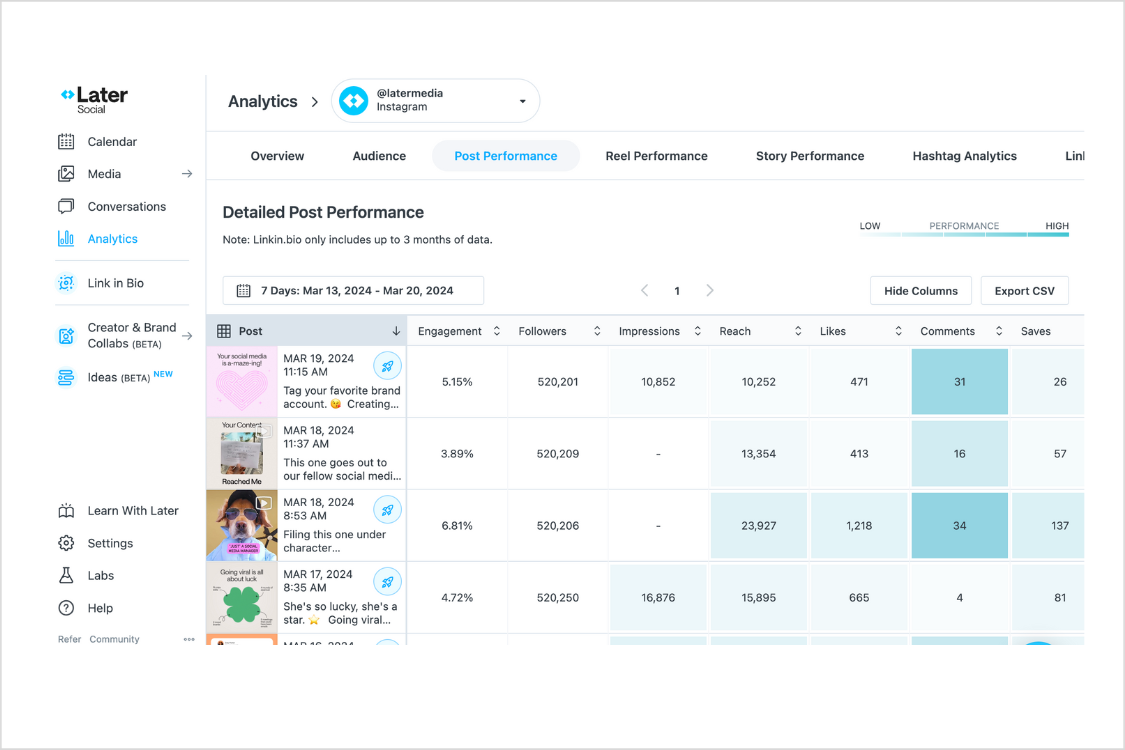
Later's analytics capabilities make it easy to gather data for Instagram (including Stories & Reels), TikTok, Pinterest, Facebook and X in one platform and evaluate your performance across social media platforms.
Plus, you can turn this into an easy-to-read social media report for internal stakeholders, saving you time generating reports and comparing between platforms yourself.
Later’s benefits don’t stop there. Schedule social content for 8 different platforms in one content calendar, save drafts, collect UGC, and use AI to write captions. We’re a social media marketers’ best friend.
Hootsuite
Hootsuite’s platform offers scheduling, analytics, content creation tools, and social listening capabilities, depending on your plan.
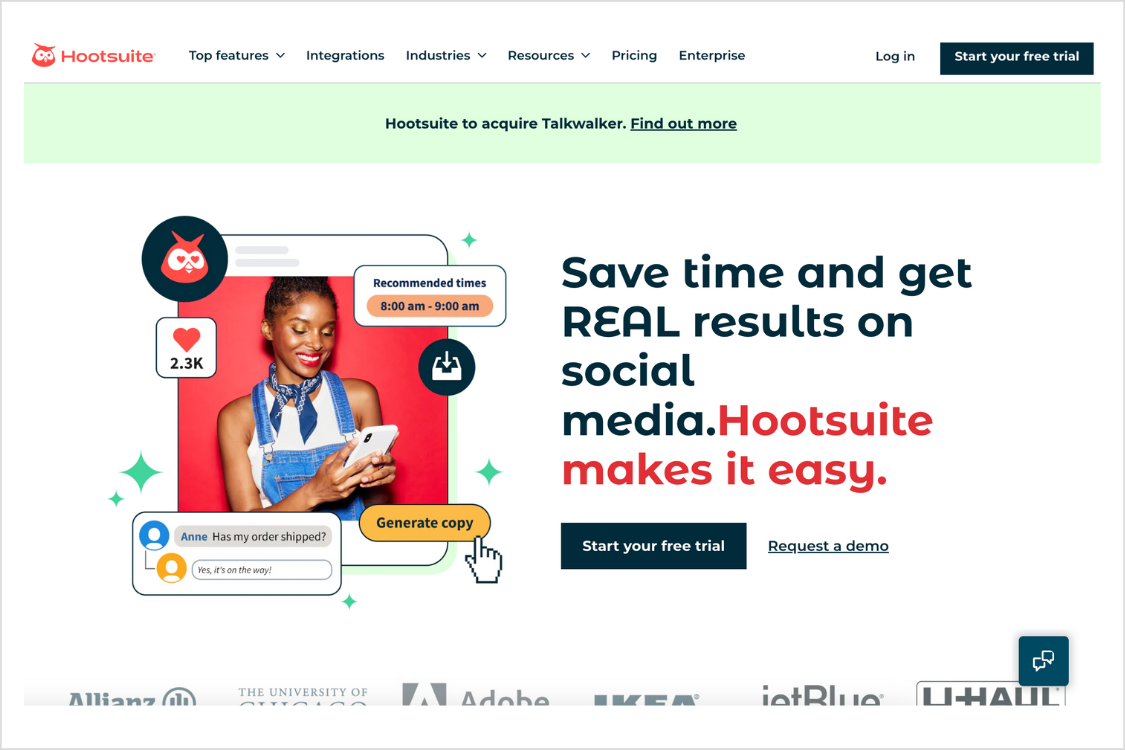
One thing to note about Hootsuite? It’s a pricier option, making it a less accessible option for freelancers and small businesses.
Buffer
Buffer’s platform focuses on helping companies grow their organic following, providing a library of content ideas, engagement features for brands on social media, and optimization suggestions to help save you time.

Want to check out more? We wrote a whole guide to 10 of the Best Social Media Analytics Tools. But if you want our opinion? Later Social is your best option for social media analytics and beyond.
Great Social Media Insights = Better Social Campaigns
The best way to prove your brilliant social media strategy is helping your business? Analytics!
It's not just about gathering data — it's about collecting the right data to power your strategy and drive success.
Get started with Later today and elevate your social media game. Sign up for a free trial today.


